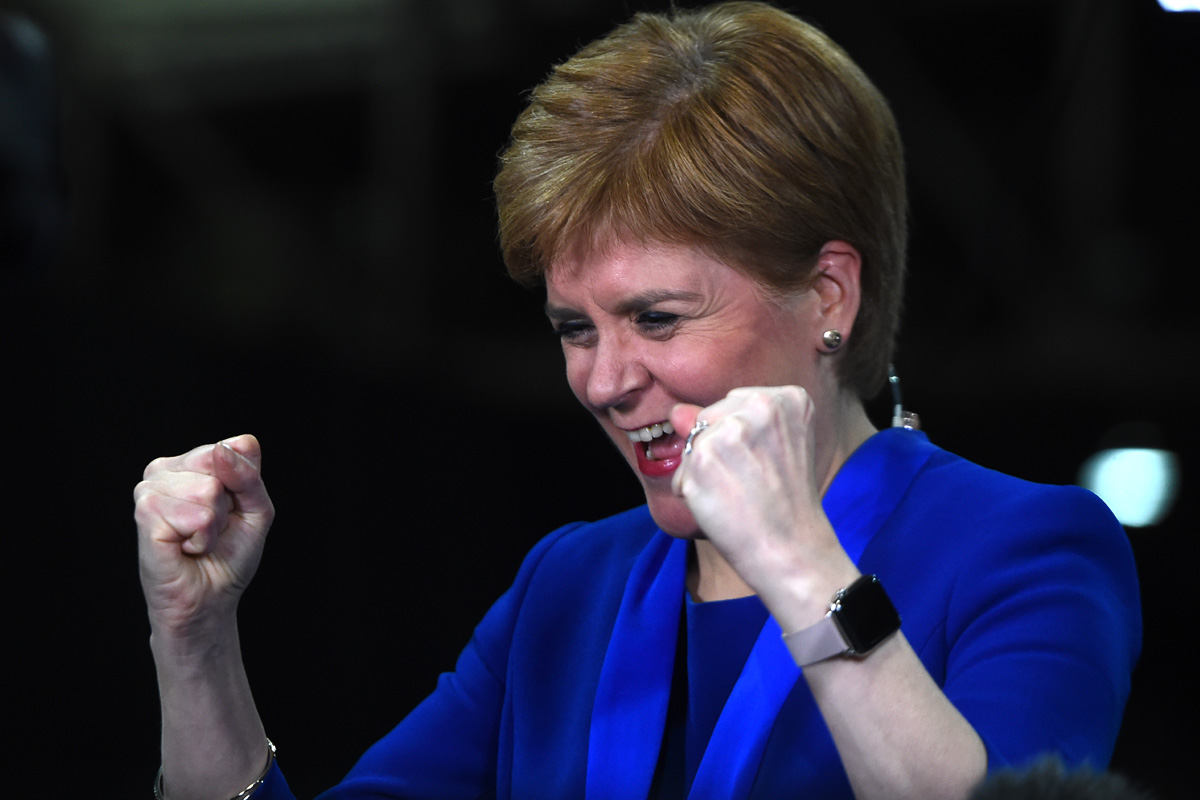On the last Sunday before the all-important UK snap election of 2019, ‘The Guardian’ opinion polls are predicting a 43 per cent vote share for the Conservative Party, 33 per cent for the Labour Party, 13 per cent for the Liberal Democrats, 3 per cent each for the Green and Brexit Party, and SNP, UKIP and Plaid Cymru together having a 6 per cent vote share. With no major pre-poll alliance in place and if these predictions come true, apparently the Boris Johnson-led Conservatives should have a cakewalk to get a comfortable absolute majority in the 650-seat House of Commons within the multi-party first-past-the-post voting system of the country.
However, things are not going to be so easy for Mr. Johnson and the Brexiteers, and UK might be heading towards a hung parliament – courtesy the extensive exercise of ‘tactical voting’ which becomes instrumental for one in four voters of the UK to vote in favour of some party which is not their first choice. For many years, ‘tactical voting’ has been very common in many parts of the world – in different parts of Europe, Canada, Japan, India. More than seven decades ago, Anthony Downs outlined the dynamics of ‘tactical voting’ in his seminal book ‘An Economic Theory of Democracy’ (1957).
Clearly, ‘tactical voting’ should be quite high and also it should have crucial impact in the closely contested seats. The UK has been susceptible to ‘tactical voting’ for years. BBC observed strong wave of tactical voting interest among the electorate prior to the 2005 general elections in the UK. Tactical voting reached a new stage in the 2010 general election, when some Left-leaning newspapers even proposed voting guides such as “Lib Dems Vote Labour Here” and “Labour Vote Lib Dem Here”. And in 2017, according to an Electoral Reform Society report, 6.5 million people (more than 20 per cent of the voters) voted tactically by choosing a candidate they thought most likely to beat the one they disliked.
Ever since Brexit became the most dominant issue in British politics, voters are more willing to vote for other political parties that back their side of the Brexit argument. Essentially multi-party democracy is becoming a two-ideology democracy to a great extent – Remain and Leave being the two ideologies. The percentage of people ready to vote tactically is everincreasing. Some experts believe that about 40 per cent of voters might be considering such an option. And it’s in both directions.
Conservative voters are willing to consider the Brexit Party; Brexit Party voters are willing to consider Conservatives. And then Labour voters are willing to consider the Lib Dems and Greens; and the Greens and Lib Dems are willing to consider Labour. Some websites have been set up to guide tactical voting; these are ‘Get Voting’, ‘Remain United’, ‘Tactical Vote’, ‘tactical.vote’, ‘People’s Vote Tactical Vote Tool’, and so on. The idea is to gather the opposition votes in any constituency. Their recommendations are based on past and current polling data. Some websites have even used variants of a relatively new and sophisticated statistical technique called multilevel regression and post-stratification (MRP) which estimates voting intention in individual constituencies from nationwide polls.
According to the Daily Telegraph, tactical voting won’t make a difference in 542 seats, due to the whopping majorities of Labour or Conservatives in those seats. But 53 Leave seats and 55 Remain seats have potential to switch if people vote tactically. Tactical votes come into play in more marginal seats, and a swing of just a small percentage of votes in those constituencies might change the results. According to the pro-remain New European newspaper, a poll for anti- Brexit group Best for Britain suggested that the Tories could win 345 seats – a majority of 40 seats.
According to them, 35 seats hold the key to stopping a Conservative majority, a switch of fewer than 2,500 votes in each of these constituencies could stop a Conservative candidate from winning. In fact, with an average of just 1,131 votes needed in each constituency, just 41,000 tactical votes in total among the 46 million electorates could be decisive for the outcome of the election. Similarly, another tactical voting site, Remain United, focused on 36 seats. The Guardian has prepared a map of 50 seats including 33 seats in England and Wales that sent Tory MPs last time, but where tactical voting could keep the Conservatives out.
A more subtle form of tactical voting is being attempted by online platforms like Swap My Vote, which attempts to match voters in one constituency where their preferred candidate has no chance of winning with voters in another constituency having the opposite problem. However, it depends entirely on trust between two people who are unknown to each other, and who support opposing political parties. It’s an interesting idea, indeed. And this idea needs detailed study as well. Several kinds of propaganda are on view. For example, “Labour cannot win here. Your vote could be the difference.”
In a nutshell, tactical voting websites, pollsters and bookmakers are mostly showing the best way to beat the Tories and to stop Brexit. This is how the UK is poised as it goes to polls. Tactical voting has essentially turned this general election into another Brexit referendum. Or, to put it in a different way, this election is fully dominated by Brexit – no doubt about that. According to a recent poll by BMG, about 24 per cent of voters intend to vote tactically. This is in contrast to the estimated 20 per cent tactical votes polled in 2017 general election, estimated by the same organisation.
Thus, politically the country is becoming more ‘tactical’ – no doubt about that. An estimated 28 per cent Remainers are likely to vote tactically this time around, while about 22 per cent Leavers are expected to cast tactical votes. The task of many potential tactical voters became easier as the Liberal Democrats, Greens and Plaid Cymru have agreed not to field contesting candidates in 60 constituencies, and, similarly, the Brexit Party is not contesting in any of the 317 Conservativewon seats of the 2017 polls. However, these actions of parties of the two opposing ideologies – Remainers and Leavers – effectively forced the voters also to think about casting their votes tactically.
Tactical or Strategic Voting has many dimensions indeed, as outlined by Laura B. Stephenson, John H. Aldrich, and André Blais in their 2018 book-length discussion ‘The Many Faces of Strategic Voting’. Overall, there is little doubt that this election is all about Brexit. It may very well be treated as a second Brexit poll in disguise.
(The writer is Professor of Statistics, Indian Statistical Institute, Kolkata)











